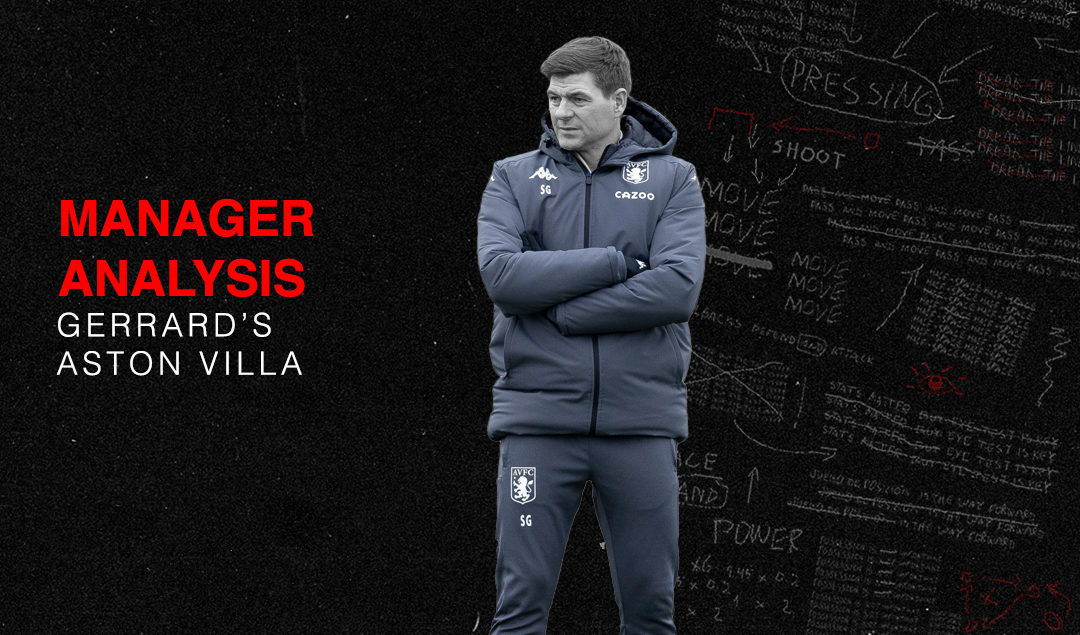Steven Gerrard’s Aston Villa: A Mini Liverpool
At just 41 years of age, Steven Gerrard has already served as Rangers manager, coaching 196 games, winning 64% of those games, and leading them to their first league title in a decade and ending Celtic’s domestic dominance. This resulted in his first-ever Premier League job, with Gerrard replacing Dean Smith as Aston Villa manager on November 11.
The Key Principles
In both of his jobs in Glasgow and Birmingham, Gerrard has stuck with the 4-3-3 formation. There have been several variations from the line-up, with Ollie Watkins sometimes playing on the left wing and Danny Ings operating as a center forward, as well as Leon Bailey and Douglas Luiz earning starts from time to time, but the 4-3-3 has nevertheless remained over Gerrard’s first month and a half at Villa Park.
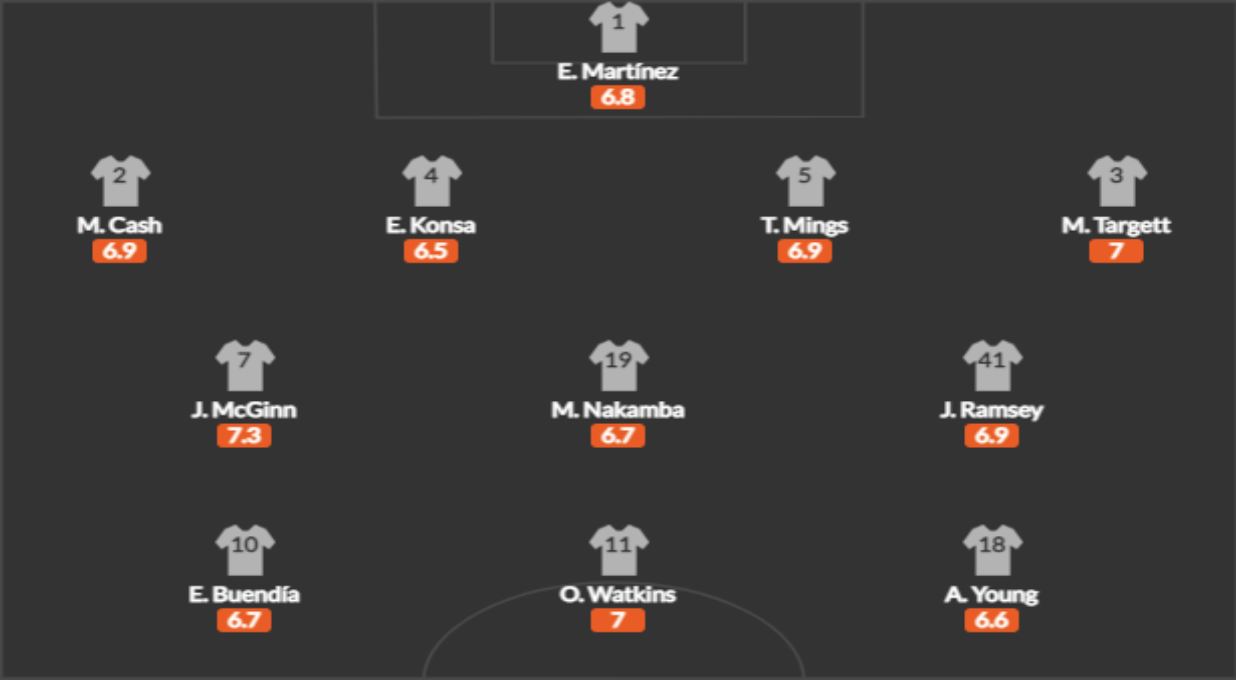
Photo: WhoScored
In Gerrard’s 4-3-3 formation, the fullbacks push higher up the field to act as wingbacks and hold the width, allowing the wingers to tuck in and operate narrower as inside forwards.
This creates a 2-3-5 shape in attack that can change to a 3-2-5 if a man advantage at the back is needed, and it is created by dropping the defensive midfielder between the two center backs with the midfield trio covering the wider areas.
When watching Gerrard’s Villa, one cannot help but notice the similarities between Liverpool’s title-winning 2019/20 side that placed a huge emphasis on attacking down the flanks whilst dominating the middle of the park.
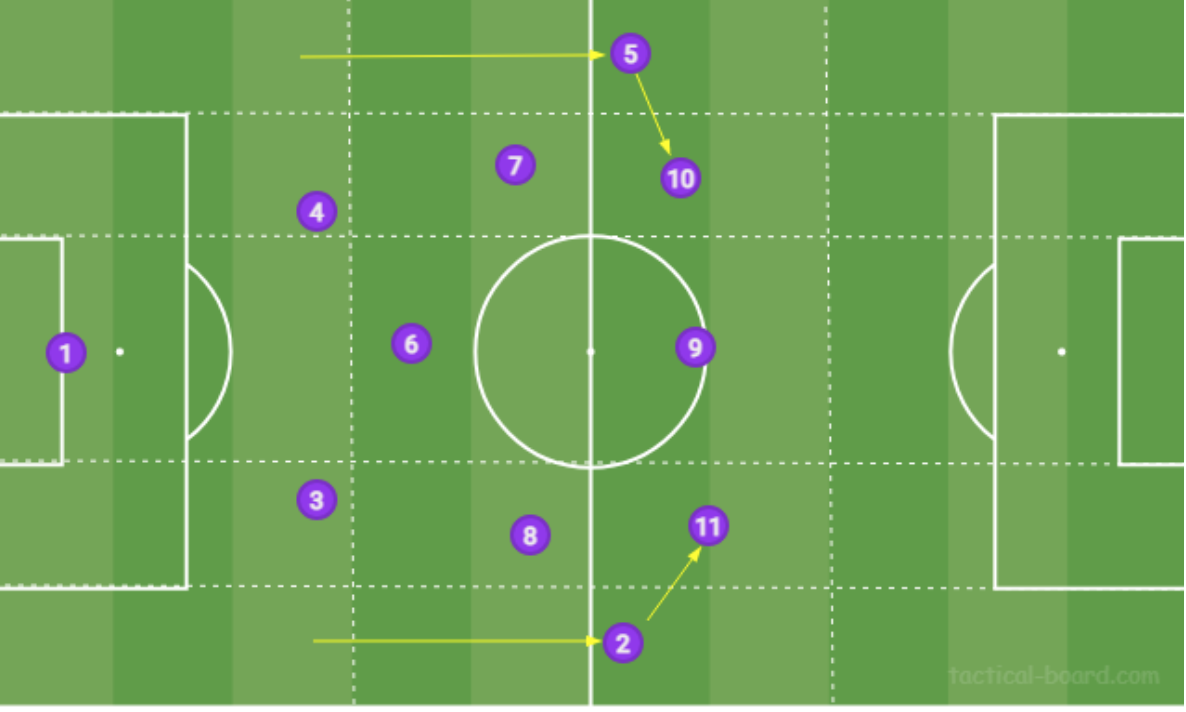
The Build-up
Villa’s build-up structure looks like a 2-3-2-3 formation involving the goal keeper. They move the ball through the flanks, mainly due to the natural passing triangles formed, and look to move the ball through the flanks by quick passes and maintain a high tempo so they almost immediately look to penetrate the defensive block.
Alternatively, the central defensive midfielder can look to play long balls in the wider regions to use the pace of the inside forwards as an asset in the build-up play.
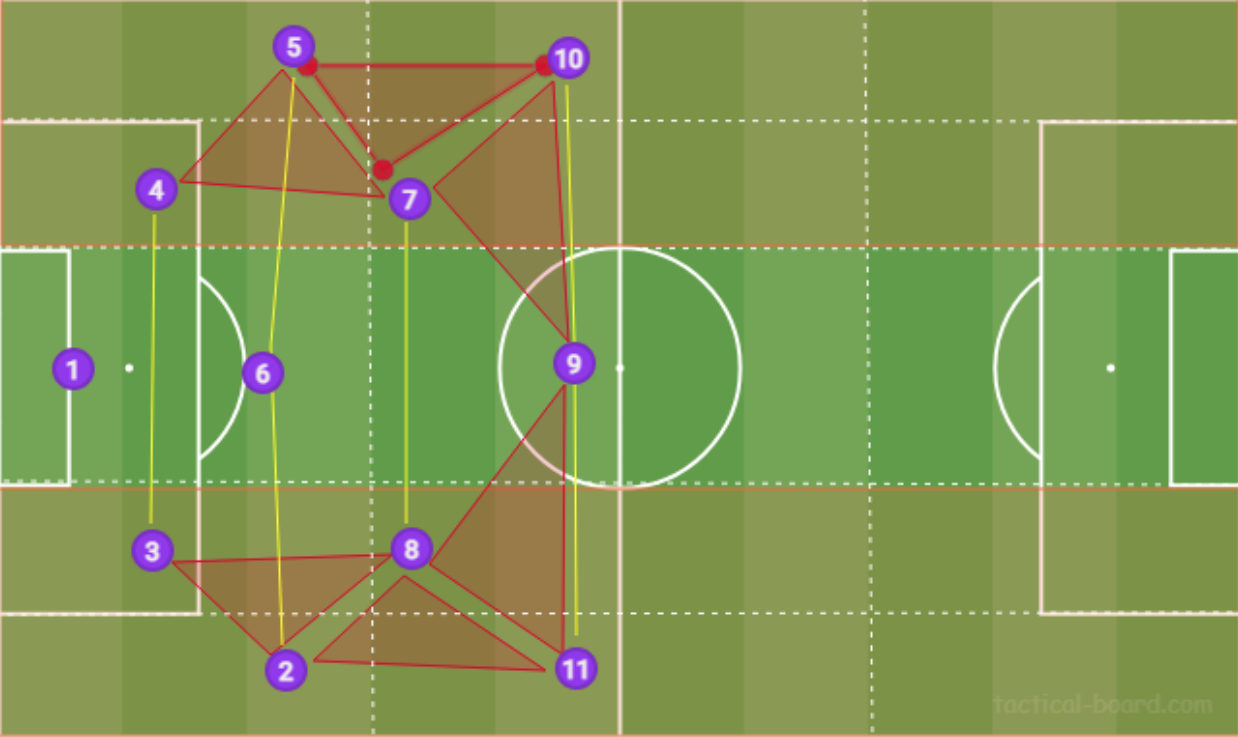
The Creation Phase
In the creation phase, Villa adopt their 2-3-5 shape to create chances either by crossing the ball into the box and using Ollie Waktins as a target man. They retain the ball in those locations by utilizing the triangles formed between the inside forwards, the central midfielders and the fullback.
Alternatively, the front three can use quick, precise passing to penetrate the opposition’s back line. This quick interplay is present through their principles of play; Gerrard prefers a high-tempo, direct style that has the Villa forwards linking up with few touches and seeking to get to the box as quick as possible.
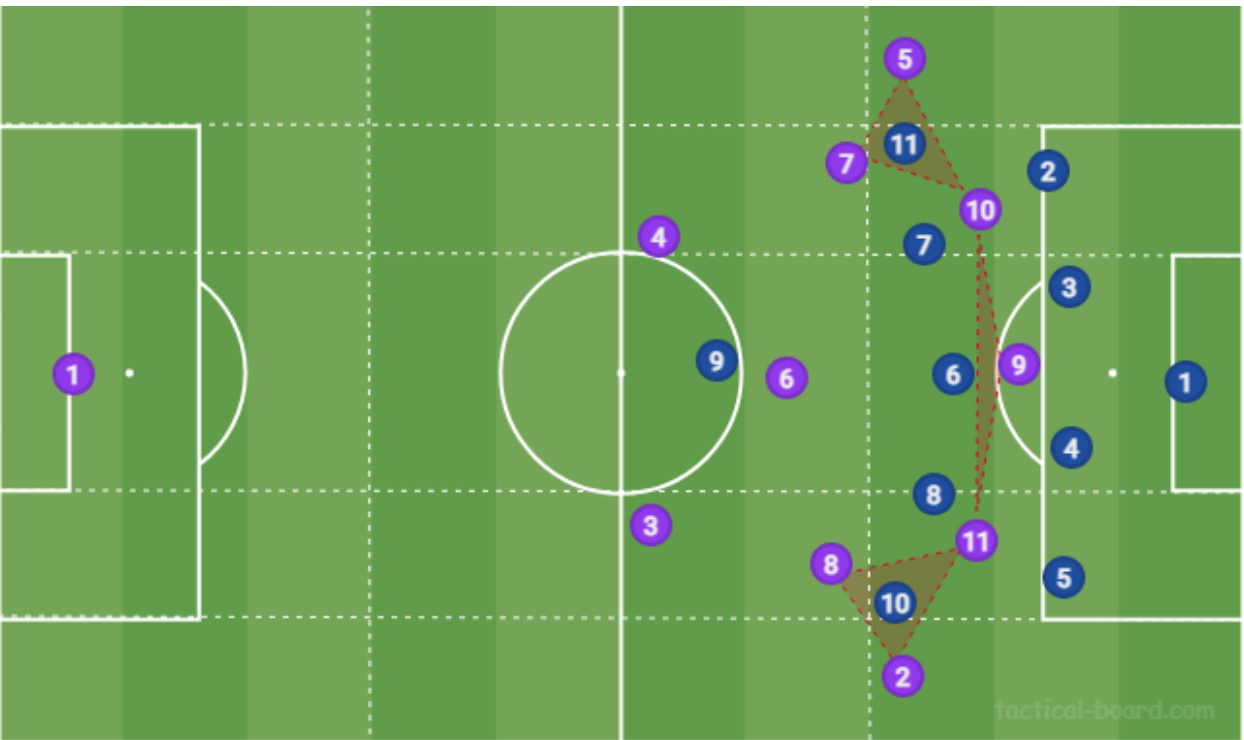
Out of Possession
Without the ball, Villa would drop into a much narrower 4-3-3 with a high back line. This vertically compact shape allows them to press aggressively and pack the center so the ball doesn’t penetrate through the middle. And if it did, it can be resolved almost immediately due to Villa’s compact setup.
The front six would be used in an aggressive man-to-man press, with the front three pressing to force the ball wide, and from there, the highly energetic midfielders could look to win the ball by pressing the forced issue.
The central defensive midfielder could sometimes be overly aggressive and leave a gaping hole between the midfield line and the defensive line. In that case, the forwards and the outside midfielders would look to quickly drop back and try to regain the ball.
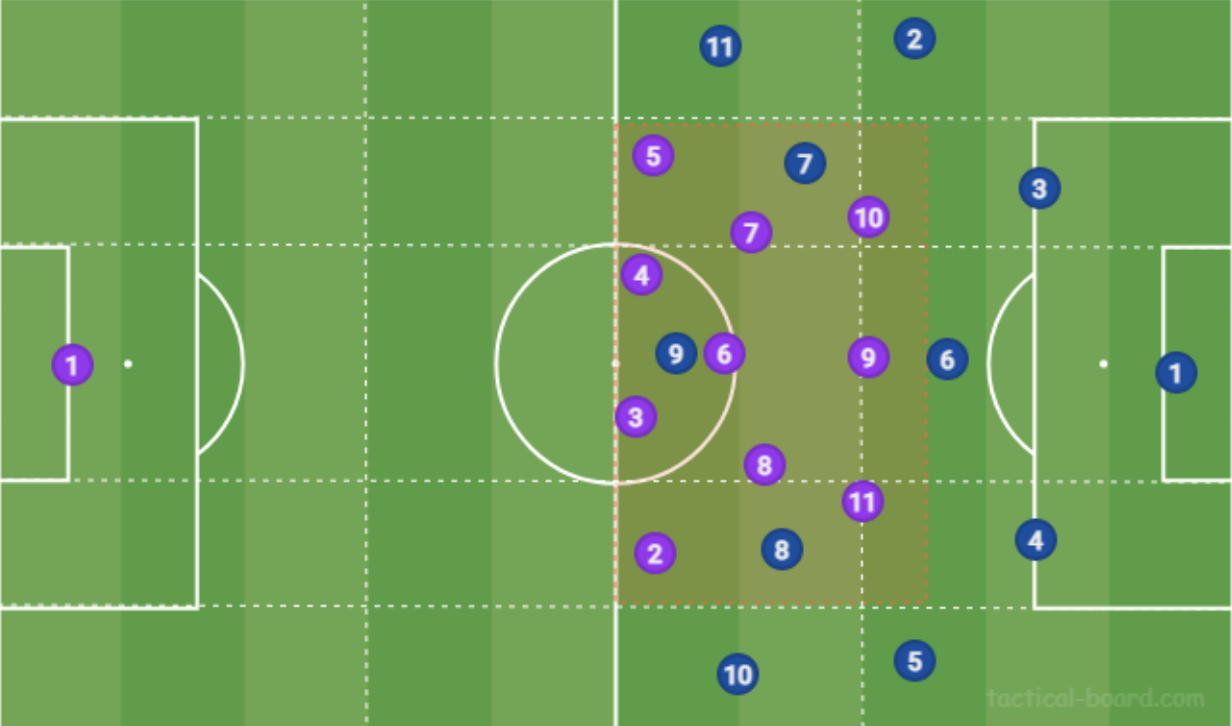
The Inspiration From Jurgen Klopp’s Liverpool and the Differences
Both Liverpool and Aston Villa have a lot of similarities tactically. Both use narrow wide forwards, both look to create through the flanks, often using the fullbacks as an outlet, and both have an energetic midfield three that supports the attack both offensively and defensively.
Gerrard’s midfield at Villa most closely resembles Liverpool’s 2018/19 midfield trio that won the UEFA Champions League and challenged Manchester City for the league title up until the final day of the season. Jordan Henderson operates as the Carrilero or the ‘Shuttler’, Georginio Wijnaldum as the box-to-box midfielder and the half-back (aggressive sweeper) being Fabinho.
At Villa, these roles are taken up by: Douglas Luiz as the carrilero, Marvelous Nakamba as his half-back, and John McGinn as the box-to-box midfielder. The main difference between the two sides is that Klopp used a 1-2 structure in his attacking trio with Roberto Firmino dropping to facilitate the two inside forwards Mohamed Salah and Sadio Mané.
Steven Gerrard is yet to implement the positional rotations or complex positional play principles which have been crucial to Klopp’s success at Anfield. However, he has reached great success in his three-and-a-half years at Rangers and Villa and showcased an impressive upward trajectory in his tactical nous and versatility.
Conclusion
Despite his relatively short managerial career, Steven Gerrard has proven to be a capable, promising manager and the right long-term choice for Aston Villa. The Villans have taken four wins and three losses so far under Gerrard — his sole defeats coming to Manchester City, Chelsea and Liverpool — and with longer time and greater investment, Gerrard could build a special project with this Aston Villa side.
By: Arhum Siddiqui / @MrArhumSiddiqui
Featured Image: @Juanffran / Neville Williams – Getty Images
